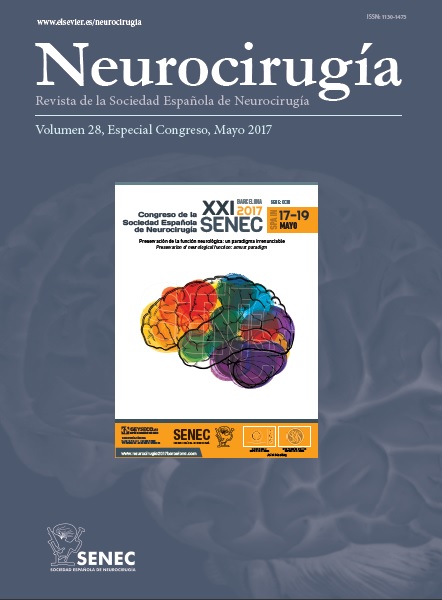C0495 - USE OF ANTI-D WAVE TO OPTIMIZE AND MAXIMIZE SAFE RESECTION OF SPINAL CORD TUMORS, WHILE PRESERVING NEUROLOGICAL FUNCTIONS
Hospital General Universitario Gregorio Marañón, Madrid, Spain.
Objectives: To present the novel “anti D wave”, as a new neurophysiological tool to perform intraoperative neurophysiological monitoring in spinal cord tumors. We present our experience with an illustrative case of intraspinal ependymoma affecting the cervical cord.
Methods: We performed a review of the literature and found one thorough paper presenting the use of “anti D wave” or antidromic wave in human patients with tumoral diseases. This wave is deemed to be presumably used in a similar fashion than the better known “D wave”. Therefore, we systematically started to complement our standard intraoperative neurophysiological monitoring with the Antidromic Cortico Spinal Tract Potential (“anti-D” wave) in patients with spinal cord tumors.
Results: We present the video of an illustrative case of a 44-year-old male patient who presented at our institution complaining of a 6-month history of cervicalgia. MRI showed an intradural intramedullary cystic lesion that extended from C2 to C6. A small enhacing nodule was observed in the middle of the lesion. Surgical procedure with intraoperative neurophysiological monitoring was scheduled. In addition to the standard monitoring [somatosensory evoked potentials, transcranially elicited muscle motor evoked potentials, epidural motor evoked potentials (D wave) and cortical spinal cord-evoked potentials], we recorded the Antidromic Cortico Spinal tract Potential, also known as Anti-D wave.
Conclusions: We found a close correlation between anti-D wave and D-wave. We have recorded the anti-D wave in 3 additional patients with spinal cord tumors, observing a similar positive predictive value for preservation of neurological functions, when comparing this novel wave to the more commonly used D wave. Admittedly, further cases are needed to better characterize this new neurophysiological tool and add it to the intraoperative armamentarium for treating complex spinal cord tumors, yielding a better chance of preserving neurological functions.







